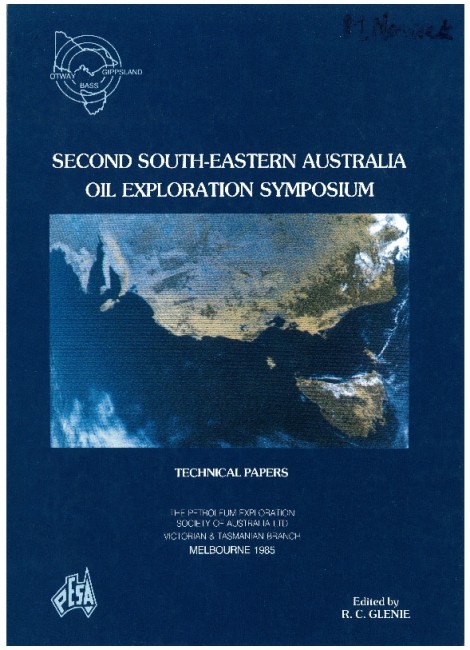Publication Name: Second South-Eastern Australia Oil Exploration Symposium - Technical Papers
Authors: R.C. Sprigg
Date Published: December 1986
Number of Pages: 39
Reference Type: Book Section
Abstract:
Botryococcus algal scums (coorongite) on sub-coastal lagoons and offshore oil seeps, resulting in the strandingof 'coastal bitumen' at not infrequent intervals along the southern Australian coasts, initiated the first oil drilling in Australia in 1866. The first well in the Otway Basin was drilled near Kingston in 1892. From 1915 drilling was spurred on by the search for surface expressed anticlines. In the ninety or so years since drilling commenced, more than 120 exploration wells have been drilled for the discovery of only three small gas fields, notably by Beach Petroleum NL near Port Campbell, and the recording of numerous gas and oil shows principally in Cretaceous age sediments, but more recently in the basal Tertiary Pebble Point Formation. Exploration drilling peaked in the 1960s (30 land wells; 11 offshore wells) with the drilling of a total 95,126 metres of hole. This immediately followed the initial natural gas discovery at Port Campbell by the Frome-Broken Hill Group in 1959.
Relatively intense faulting, typical of early and late stages in Atlantic-type coastal pull-apart tectonics, combined with relatively poor quality early seismic data, has undoubtedly delayed more widespread discovery to this time. Regarded as of relatively low source-bed potential, the voluminous Lower Cretaceous Otway beds give evidence of coorongitesourced oil generation and natural gas from coaly detritus. Deterioration of reservoir beds at greater depths is obviously a problem.
The graben-type Otway 'Infra-basin' gave way in later Cretaceous times to half-graben extension and finally Tertiary pull-apart tectonics and extension.
The basin complex is obviously a difficult and geologically complex area to explore, demanding application of the latest state-of-the-art seismic technology. Many small oil and gas fields will eventually be found, but the basin is not likely to be a flush producer.


